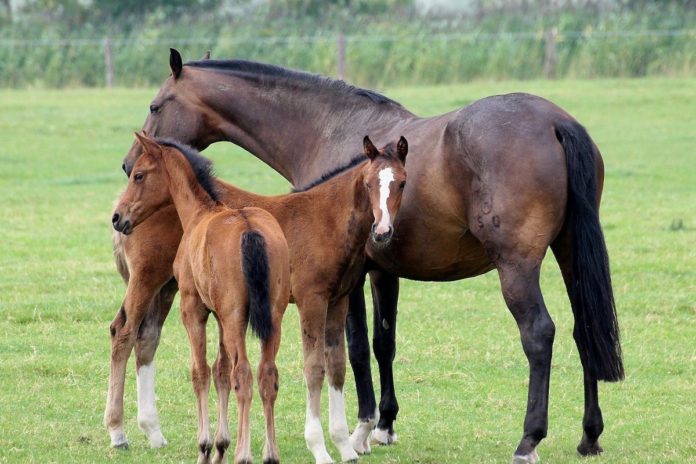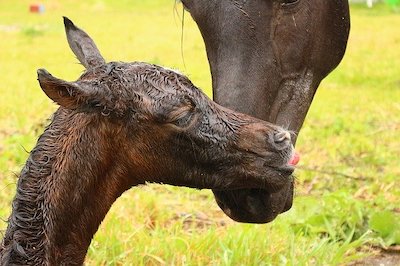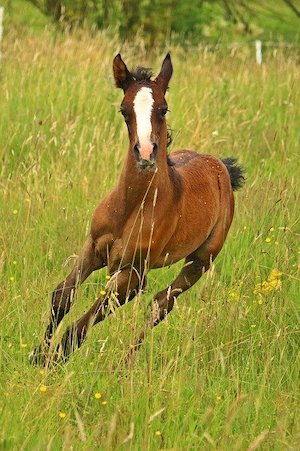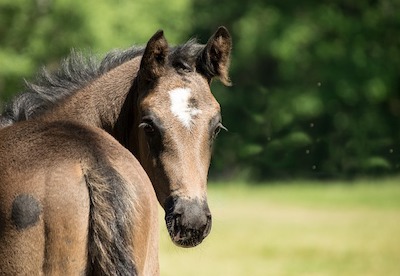FEED THEM WELL TO BREED THEM WELL
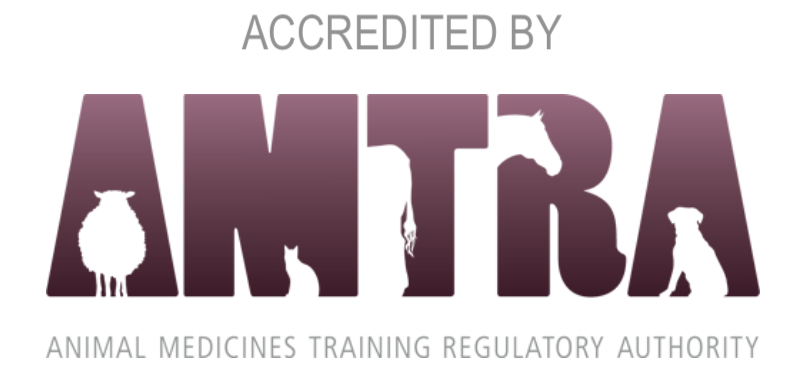
When it comes to feeding mums: “It’s the same for horses as it is for humans.” Refresh your knowledge and earn AMTRA accredited CPD points.
Whether your customer is breeding from a favourite mare or running a large breeding operation, success is based on attention to detail in all aspects of management, including feeding, says Clare Barfoot RNutr, marketing and research and development director at Spillers.
Feeding mum
The right nutrition for the mare is often thought of as less important than for the foal. But actually, it’s the same for horses as it is for humans.
Whether a foal or a baby, the role of nutrition, via the mother, is recognised as important for optimum growth as well as having the potential to switch on and off genes.
From breeding to weaning, the mare goes through four periods of differing nutritional needs: early gestation, late gestation, early lactation and late lactation.
First eight months of gestation
Although it is often quoted that there are no additional nutritional requirements during this time as foetal growth is relatively slow compared with the end of gestation, it is in fact a critical time for the developing placenta and foetus. Inadequate nutrition during pregnancy can increase the risk of abortion, low birth weight and can affect the future growth and development of the foal.
Although mares don’t require extra calories during this time, a good supply of amino acids, vitamins and minerals is essential to support foetal development.
Your customer’s feeding strategy during this time will depend on several factors: the condition of the mare, her age (she may still be growing herself, or may be getting on in years), the time of year, the quality of pasture, her breeding and whether or not she has a foal at foot.
For good doers, warmbloods, natives and thoroughbreds in good condition good quality forage and/or grass fed alongside a feed balancer is ideal to provide a balanced diet without unnecessary calories.
For mares requiring condition or with a foal at foot, a stud cube or mix is ideal.
Last three months of gestation
During the last three months of pregnancy the foetus undertakes 60% of its total in utero growth, increasing the mare’s nutritional requirements. Her energy requirements will increase by 15-30% leading up to the birth. She will also need additional protein, calcium, and phosphorus for foetal development and milk production as well as optimum levels of vitamins and minerals.
Mare’s milk is low in many trace elements, so it is important for the growing foetus to store these for use during the first six weeks of life.
If the mare is supplemented, the foal will accumulate stores in its liver. 50% of accumulated stores of copper, manganese and zinc occur in the 10th month of pregnancy.
Copper is closely involved in bone and cartilage development therefore supplementation is critical. Another important nutrient during this phase is vitamin E as research has suggested that dietary supplementation of vitamin E and selenium to the mare may influence colostrum concentrations of antibodies and therefore help support passive immunity to the foal.
During the last three months of pregnancy, the diet needs to be slowly changed to an appropriate stud feed and fed up to 40% of the total diet.
For mares foaling onto spring pasture or native or warmblood mares that don’t require the additional calories stud feeds supply, a stud balancer will provide optimum levels of amino acids and vitamins and minerals needed during this critical time but without the unwanted calories.
When concentrating on growing a strong, healthy foal it is easy to forget the mare, but pregnancy and lactation present immense challenges to her.
Such demands affect the digestive system, particularly the hindgut. Hindgut health can be secured by maximising fibre intake and reducing the reliance on cereals. Ensure forage/grass is provided ad lib or for those that require restriction, no less than 15g/kg bodyweight dry matter per day for example 9kg of hay for a 500kg mare.
Feeding baby
Many factors influence the growth and development of foals, but nutrition is one that we can more easily influence. We are increasingly realising that how we feed and manage pregnant and lactating mares as well as their youngstock can have a profound effect on their long-term health and welfare.
Age at weaning does not appear to influence significantly the mature height or weight of the foal but a good diet around weaning time is crucial.
Most foals are weaned at around 5 to 6 months, but the longer weaning is delayed, the less impact it will have on both the mare and the foal. Not only will the foal’s digestive system be more developed but he or she will be more independent of mum. All foals will reach their genetic potential for growth providing they receive adequate nutrition.
Most foals are born during the spring and for the early part of their life will be running with their dam on spring pasture with their nutrition provided by their mother’s milk and grass. However, after the first three months of lactation the nutritional value of a mare’s milk significantly drops so it is often a good idea to start to introduce some additional feed. Some foals will already be nibbling their mother’s feed and that is fine, but in other cases it may be more appropriate to feed the mare and foal separately.
Choosing a feed will depend on the foal, its breeding, your management system and quality of your grazing. For foals of native, draught or warmblood breeding, especially those on good quality grazing, consider recommending a concentrated stud balancer. These products are designed to be fed at much lower quantities than traditional feeds whilst providing good levels of amino acids, vitamins and minerals to support quality growth without additional calories. High energy stud cubes and mixes are not designed for ponies or the slower maturing breeds.
For thoroughbred foals, those needing extra condition or those on poor grazing choose a higher calorie stud feed. To reduce the risk of growth disorders such as OCD (osteochondritis dissecans) and the development of stress-related gastric ulcers, research suggests that low starch, fibre and oil-based feeds are the safest options.
Whichever you choose, it is a good idea to get your foal eating well before weaning to minimise stress when milk is eventually withdrawn. Such a strategy will also reduce the chance of a compensatory growth surge after weaning that could increase the risk of developmental orthopaedic disease (DOD).
Over-feeding at any time during the growth phase of a horse or pony’s life should be avoided. As with their mature counterparts it is better to have them slightly lean rather than fat.
How much you feed will depend on the type of product you choose and the current condition and breeding of the foal. For a conventional feed, a good rule of thumb is to provide 1lb (0.5kg) per month of age up to 6 months and 0.5lb (0.25kg) thereafter; for example 6lb (or 3kg) for a 6- month-old thoroughbred foal. For stud balancers, the feeding guide should be on the bag; but in general they are fed at 1-3lbs (0.5-1.5kg) per day.
Feeding youngsters
The aim when feeding and managing growing youngstock is to ensure a steady and smooth increase in size and bodyweight without any sudden rapid growth spurts.
It is also vital to ensure a balanced diet with the correct levels of vitamins, minerals and quality protein. A concentrated stud balancer is a reliable way to do this.
It is also important to ensure that youngsters receive adequate long forage such as grass or hay to keep the digestive system working optimally. Other management techniques that may be helpful in reducing the risk of DOD in youngstock include regularly checking joints, gentle exercise and avoiding feeding to compensate for a reduced growth rate.
Why the right diet helps
Some of the main issues affecting the growth of horses that can be assisted by appropriate nutrition include bone development, digestive health, immune status and behavioural development. Good nutrition not only supports overall health now, but also future health and longevity.
Bone development
The incidence of developmental bone diseases is high in racing and sport horse breeds; many factors, including genetic predisposition, growth rate, mechanical trauma and imbalanced nutrition, may affect the risk of disease occurring. However, the final trigger factor is likely to be associated with management, so it is important to try to limit nutritional and other managemental factors that may increase the risk.
Energy sources
Research suggests that the sources of energy in a horse’s feed are as important as the amount of energy in the diet. This is because energy sources directly affect a hormonal cascade that influences the maturation of bone. A growing body of evidence suggests the insulin response to a carbohydrate (cereal) based feed may play a significant role in the development of DOD.
Feeding diets that provide the same energy intake as cereals but are derived primarily from oils and fibres can reduce the effects of insulin and create conditions within the bone associated with a reduced risk of DOD.
Mineral supply
Bone is mineral rich containing 99% of the total calcium, 85% of the total phosphorus and up to 70% of the magnesium within the body. It is important to feed an optimal supply of these minerals in the diet; of particular importance is the ratio between calcium and phosphorus. In addition, trace elements such as copper, zinc and manganese perform essential supporting roles in cartilage and bone formation.
Gastric health
Weaning is a critical and highly stressful time for foals and it has been shown that they are susceptible to the development of gastric ulcers during this period. High cereal individual meals, fed after weaning, are implicated in the onset of gastric ulcers, since gastric acid is produced continuously whereas saliva, its natural buffer, is only produced when the foal is chewing. Long periods between meals can increase acid accumulation which can then attack the stomach lining forming an ulcer.
The key to maintaining gastric health not only includes reducing the fermentation of cereals in the stomach and increasing the buffering of gastric acid production by increasing the amount of saliva produced but also by reducing stress. The most effective way to achieve this is to allow access to grazing or forage at all times and to feed feeds based on oil and fibre.
Immunity and the role of antioxidants
The new born foal relies on the antibodies passed from his mother via her colostrum in the first 24 hours after birth to protect him from germs in his new environment. This is called passive immunity.
Increasing the value of this transfer of passive immunity is therefore of great benefit to the foal as it will increase his chance of fighting off infection. Research has proven that antioxidants in the form of high levels of vitamin E can significantly increase the antibody concentration in both the mare’s colostrum and in the foal, hence supporting his immune system at this critical time.
Behaviour
The development of abnormal behaviours or stereotypies such as crib biting and wood chewing can be influenced by both stress and lack of dietary fibre. The acute stress of weaning has been associated with the onset of such behaviours, and young horses that received traditional compounds feeds following weaning have been shown to be four times more likely to develop crib biting than those that did not. Crib-biting has also been linked to gastric ulcers in foals.
Altering the diet to include more fibre can help to reduce the risk of developing stereotypies. The feeding of ad lib forage and changing the diet to reduce the risk of developing gastric ulcers has been recently shown in trials to have drastic results even stopping foals crib biting altogether.
ABOUT ETN’S RAMA/SQP FEATURES
ETN’s series of CPD features helps RAMAs (Registered Animal Medicines Advisors/SQPs) earn the CPD (continuing professional development) points they need. The features are accredited by AMTRA, and highlight some of the most important subject areas for RAMAs/SQPs specialising in equine and companion animal medicine.
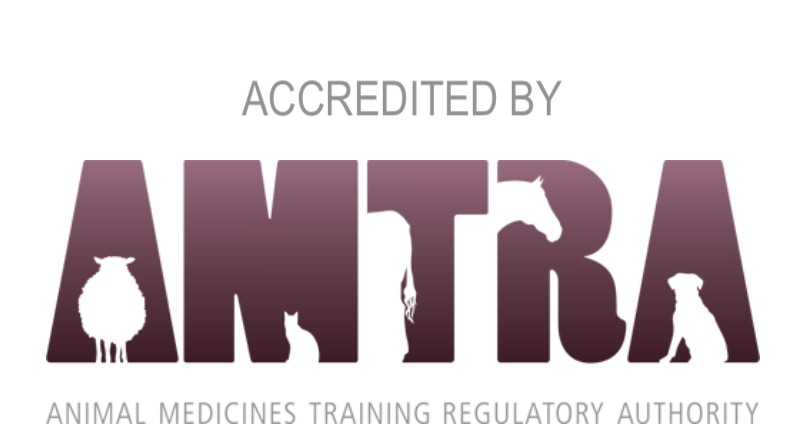
AMTRA is required by the Veterinary Medicines Regulations to ensure its RAMAs/SQPs undertake CPD. All RAMAs/SQPs must earn a certain number of CPD points in a given period of time in order to retain their qualification. RAMAs/SQPs who read this feature and submit correct answers to the questions below will receive two CPD points. For more about AMTRA and becoming a RAMA/SQP, visit www.amtra.org.uk
Twin foal image by Frauke Feind from Pixabay










